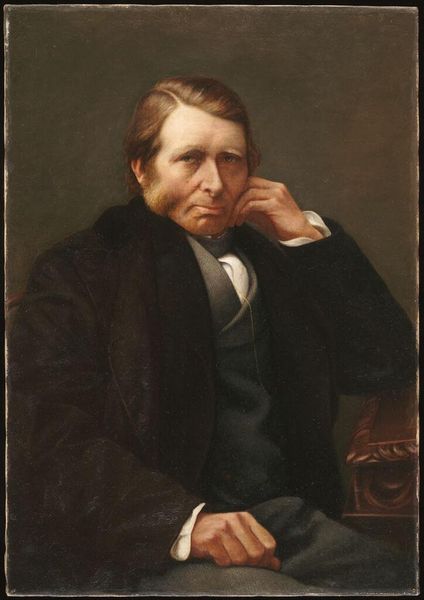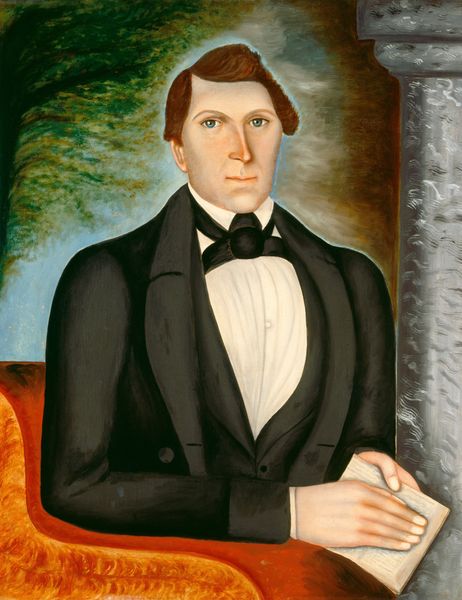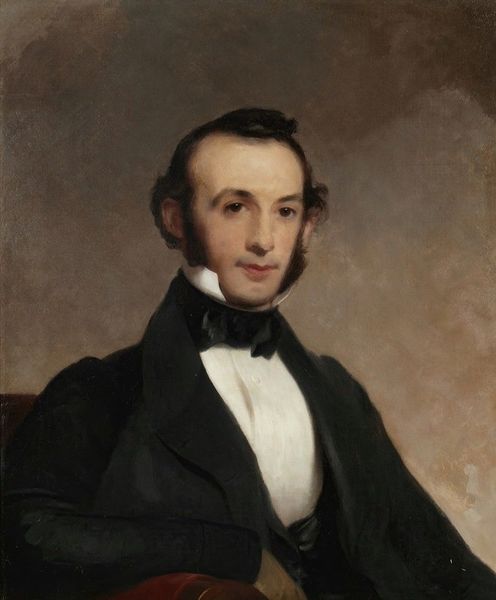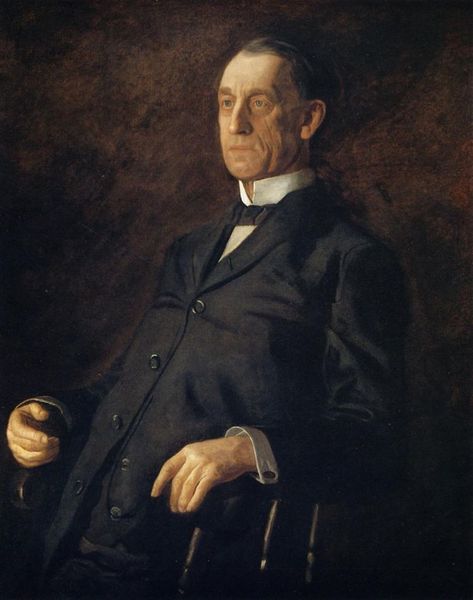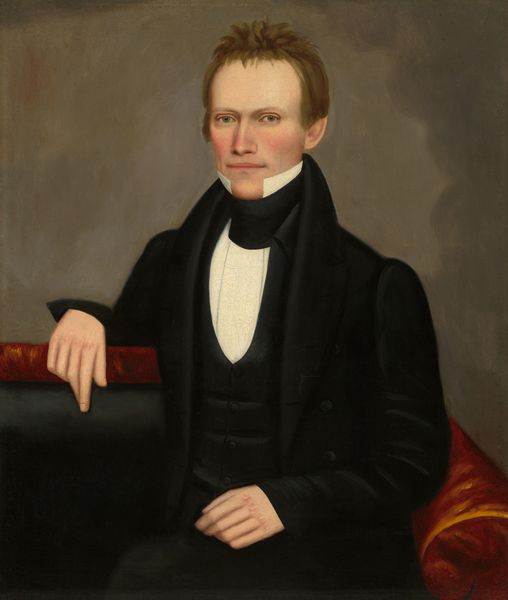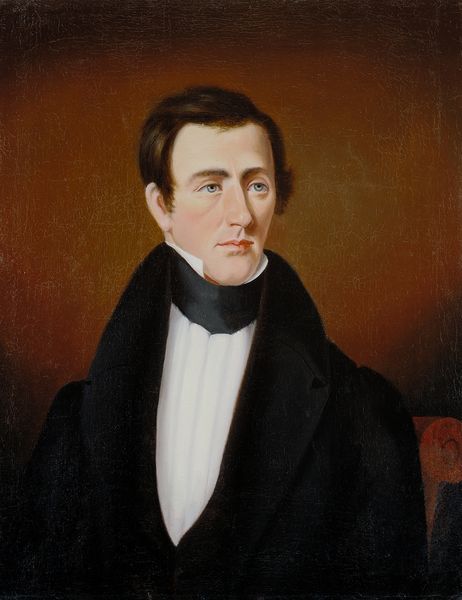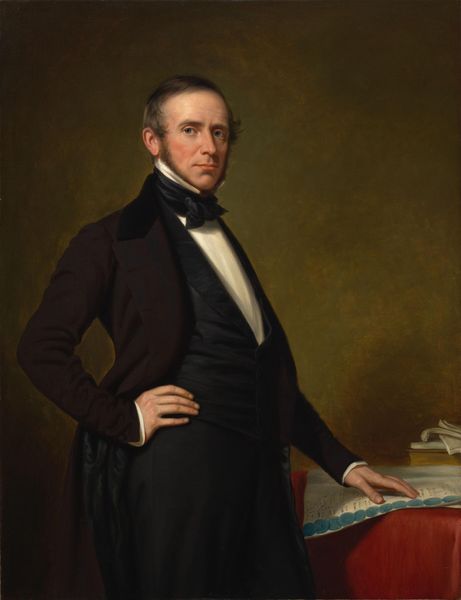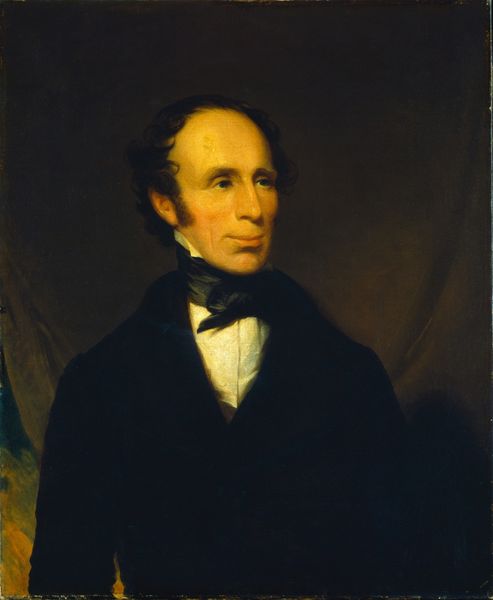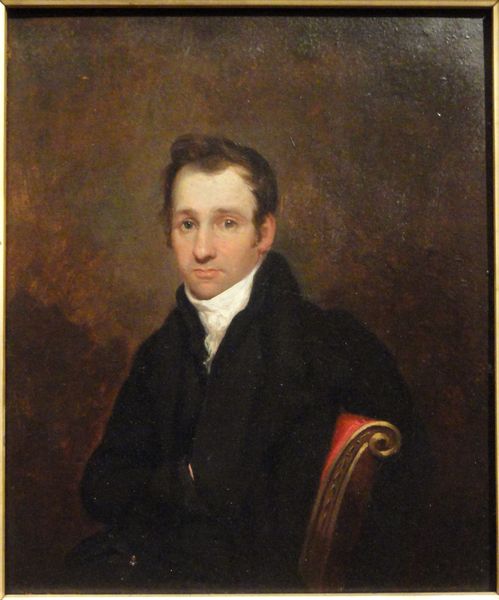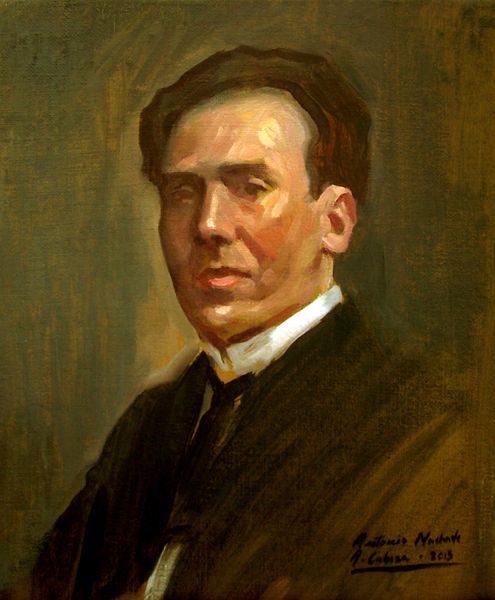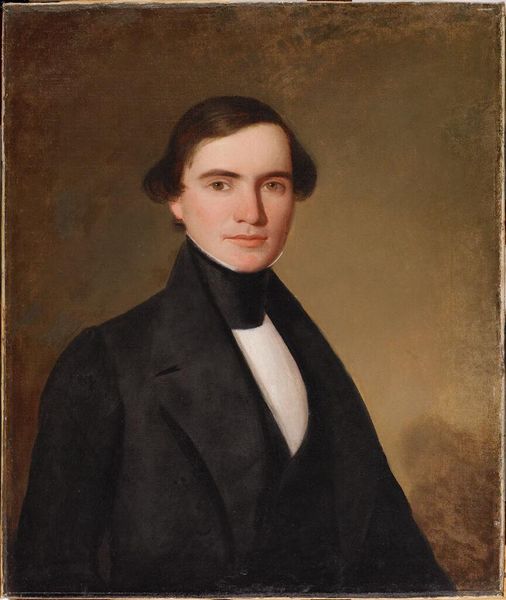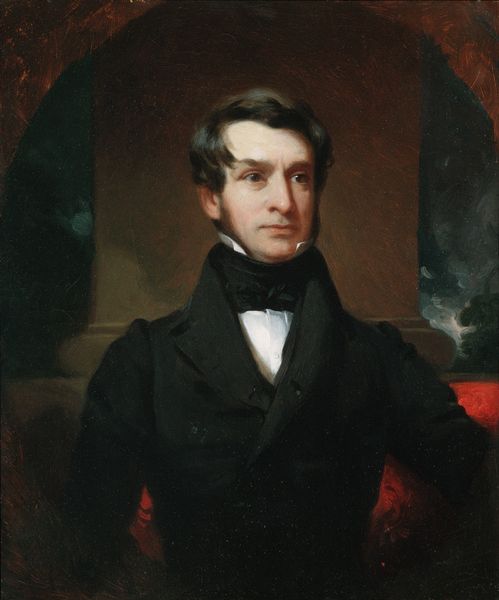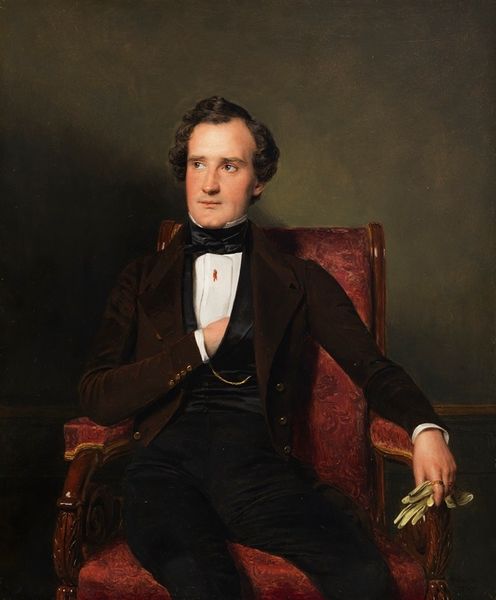
painting, oil-paint
#
portrait
#
portrait
#
painting
#
oil-paint
#
romanticism
#
genre-painting
#
academic-art
#
realism
Dimensions: 87 x 80.5 cm
Copyright: Public domain
Curator: William Bouguereau's "Portrait of Monsieur M.," completed in 1850, is currently held in the collection of the Norton Simon Museum. Painted in oil on canvas, this work exemplifies academic portraiture of the period. Editor: My initial reaction is one of… reserved austerity. The palette is quite muted, almost monochromatic, focusing on shades of black, white and flesh tones. It evokes a sense of decorum and distance. Curator: Indeed. The composition adheres to classical ideals of portraiture; consider the controlled brushwork and the subject’s deliberate pose. Bouguereau expertly uses chiaroscuro to sculpt Monsieur M.’s features and clothing, highlighting the textures of his garments. The overall effect signifies the man's upper-class status through its stylistic rigor and high level of execution. Editor: Absolutely, the historical context is crucial. Bouguereau's art directly reflects the social values of the French Second Republic. We are witnessing the image-making practices of an elite establishing their identity. What does his somber visage communicate to the viewers of the time? Perhaps he desires respect, admiration and lasting authority. Curator: A contemporary viewer may miss that underlying socio-political intention, choosing to contemplate the aesthetic balance of dark and light or, indeed, how Bouguereau guides the eye through the visual field. Observe the subtle shift of tonal values in the neutral backdrop behind him, drawing us towards his pale face. Editor: Precisely. Museums such as this one—Norton Simon—are vital, then, in continuing the dialogue with this carefully-composed cultural document, contextualizing its value across generations, and helping new viewers access some sense of its complex, past meanings. Curator: That’s true. Studying Bouguereau's approach to form—line, texture, tone—reveals the degree to which academic realism served to solidify concepts of individual identity and class during that era. Editor: And examining Monsieur M.’s image serves to open broader considerations regarding the production, ownership and reception of visual authority across many different segments of history. Thank you. Curator: You’re welcome. A fruitful exploration indeed.
Comments
No comments
Be the first to comment and join the conversation on the ultimate creative platform.
